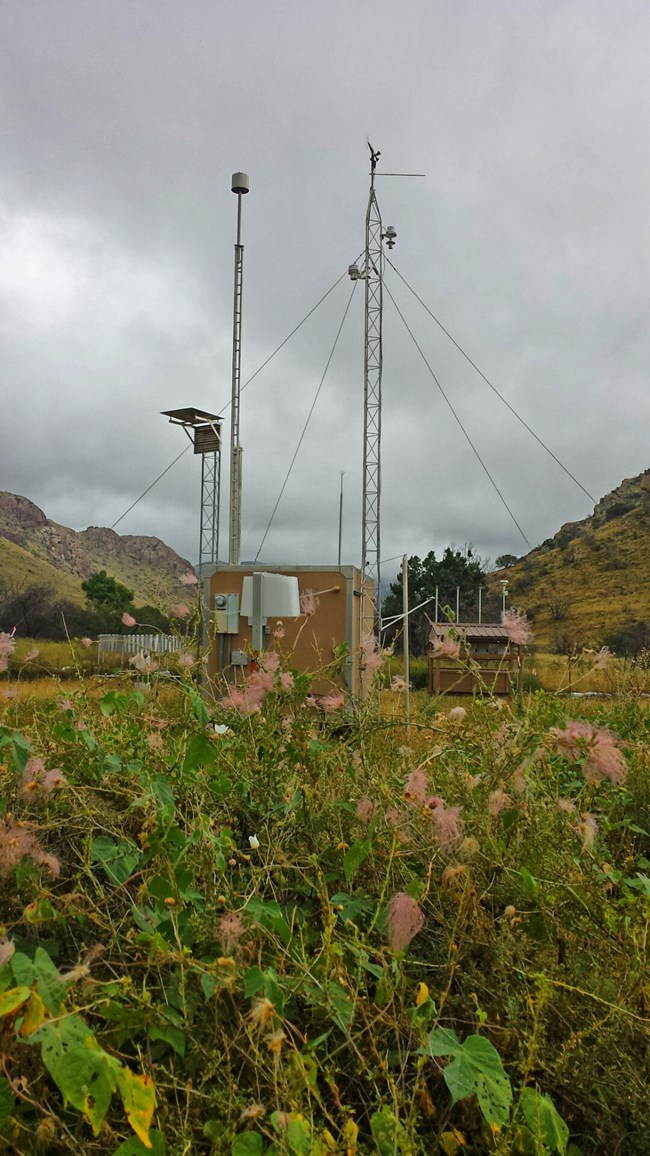
NPS/ Resource Management Division The monument maintains an Air Quality Station which tracks visibility, particulates, ozone, nitrates, sulfides, dioxins, and rainwater deposition. This data is analyzed and used to determine overall air quality, and factors or events that may be having detrimental effects on the air. This information can help managers decide what future actions may be necessary to maintain the current level of air quality, or to make improvements. The monument's close proximity to Mexico makes it a prime candidate for monitoring the effect of Mexico's pollution on air quality in the United States. Smelting, manufacturing and power plants on the other side of the border produce pollutants that can be carried into the monument. That, along with plans to build an additional incinerator and power plants within 50 miles of the monument, makes it even more critical that baseline air quality data be collected. Learn about current air quality conditions at other park sites around the United States. |
Last updated: December 13, 2018
